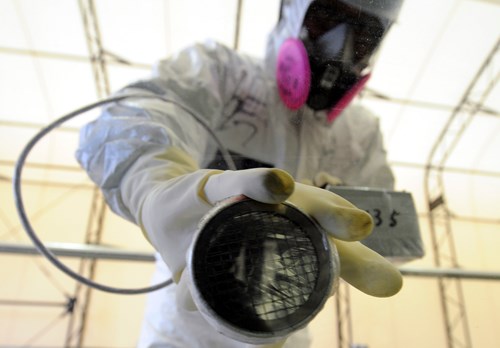I awoke to a call from a friend who urged me to turn on the TV. I’d had an eerily similar call years earlier, on the morning of January 17, 1995, when an earthquake had struck the city of Kobe (also at 5:46am – Japan time).
Back then, I was a student living in Tokyo but my family lived close to Kobe, in western Japan, so my first concern then was whether they were safe. It was 24 hours before I could get through to them.
This time, I was working as First Secretary at the Japanese Embassy in London, responsible for communications. A magnitude 9 earthquake had struck the country’s northeast coast, triggering a massive tsunami. Immediately, I headed for the office.
On the way, text messages began to pour in from people offering their condolences. At the embassy, my team was already inundated by calls from the public, concerned about family and friends, as well as interview requests from the media ...
Click here to view this article in Japanese.
The scale of the catastrophe caused by the Tohoku earthquake and the ensuing tsunami on March 11, 2011 was unprecedented in Japan. As the Prime Minister, Naoto Kan, put it at the time: “In the 65 years since the end of the Second World War, this is the toughest and the most difficult crisis for Japan.”
Nearly 16,000 people perished or remain missing. The country not only faced the wrenching loss of life caused by the natural disasters, but also had to deal with the risk posed by damage to several nuclear facilities at the Fukushima Daiichi Nuclear Power Plant complex, the worst such nuclear incident since Chernobyl. And the operator of the complex, Tokyo Electric Power Company (TEPCO), came in for severe criticism for how it managed the crisis.
Brunswick’s Daisuke Tsuchiya, who at the time was First Secretary in charge of communications at Japan’s London embassy, gives a firsthand account of what it was like for a diplomat to deal with such a catastrophe in one of the world’s media hubs. This article first appeared in March 2014 and has been lightly updated for this 2022 issue.
Reaching the embassy, we had to quickly decide our immediate crisis communications strategy.
With time constraints and only limited information, we tried to focus on three main tasks. First, we needed to inform the global audience of the action being taken. The Japanese government had established a special task force within four minutes of the earthquake. More than 100,000 Self-Defense Forces were deployed for rescue operations. Precautionary evacuation zones were put in place around the Fukushima Daiichi Nuclear Plant from day one. It was important to provide reassurance that the Japanese government was taking swift action.
Second, we needed to assure the global audience that transparency would be a priority. It was a very fluid situation and much was unclear at the outset, with limited information available to the government. So, we felt it was important to emphasize that information would be delivered as accurately and swiftly as possible and nothing would be concealed.
Third, it was important for us in the diplomatic corps to express gratitude for the support offered to Japan. Being based in London, we needed to thank the British government, industry and the public for their support. The response was amazing, with endless offers of help and support from people all over the UK. For example, the designer Sir Paul Smith was in Japan shortly after the disaster and called on British businesses
to continue to trade with the country. The Birmingham Royal Ballet went on its tour of Japan as scheduled, only two months later.

